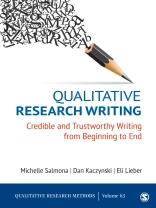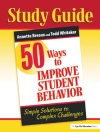Finding your academic voice to tell a strong story about your research is a difficult hurdle for many qualitative writers.
Qualitative Research Writing: Credible and Trustworthy Writing from Beginning to End takes you through the writing process, starting with how you think about your research and building towards presenting credible and trustworthy work. Authors Michelle Salmona, Dan Kaczynski, and Eli Lieber offer practical guidance based on over two decades working with faculty and doctoral students. By integrating digital tools and qualitative research steps into the writing process, readers will seamlessly move from the research process to writing. This brief text will help writers make sound arguments and develop their authorial voices to build connections between themselves and their intended audience.
Inhaltsverzeichnis
Introduction
Chapter 1: Thinking before writing
Chapter 2: Beginning the story
Chapter 3: Organizing your writing
Chapter 4: Visualizing your writing
Chapter 5: Writing about your research design
Chapter 6: Writing about data
Chapter 7: Writing up findings
Chapter 8: Writing up conclusions and recommendations
Chapter 9: Sharing the story of your research with others
References
Über den Autor
Dr. Eli Lieber is an interdisciplinary social scientist, methodologist, and data analyst. He has spent over 20 years at the University of California, Los Angeles focused on advancing our thinking about and strategically implementing qualitative and mixed methods approaches in social science research. Initially trained as a quantitative psychologist, he soon began working with colleagues from other social science disciplines and came to appreciate the deep importance and role in qualitative perspectives. From a practical view, he believes that the informed integration of methods, study design, and the data generated produce more comprehensive and robust research findings than those from more method-centric approaches.Dr. Lieber’s recent work has focused on the continued development of mixed methods strategies and technologies. Eli is particularly interested in what we do with all the data we gather: How can data be integrated and what evolving technologies can make our research and evaluation work and findings more efficient, effective, and sustainable? Eli looks forward to his work with Institute for Mixed Methods Research (IMMR) colleagues—a truly global and diverse group of individuals. The IMMR mission will be an ongoing service to building methodological capacity, relationship building, engagement and communication regarding evolving mixed methods work, and bringing the deep experience of IMMR associates into the service of others employing these practices. Dr. Lieber is optimistic about how mixed methods research and IMMR can advance social science through engaging with colleagues directly, through connections within larger institutions organizations, and through the forging of strategic partnerships.












